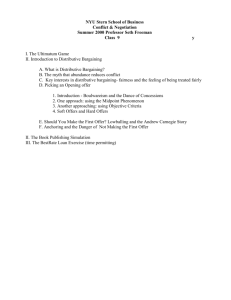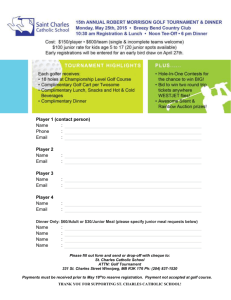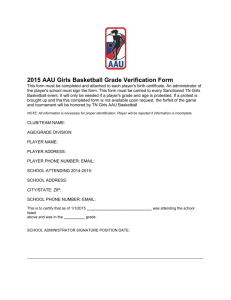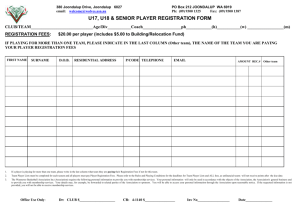Fordham University Graduate School of Business
advertisement
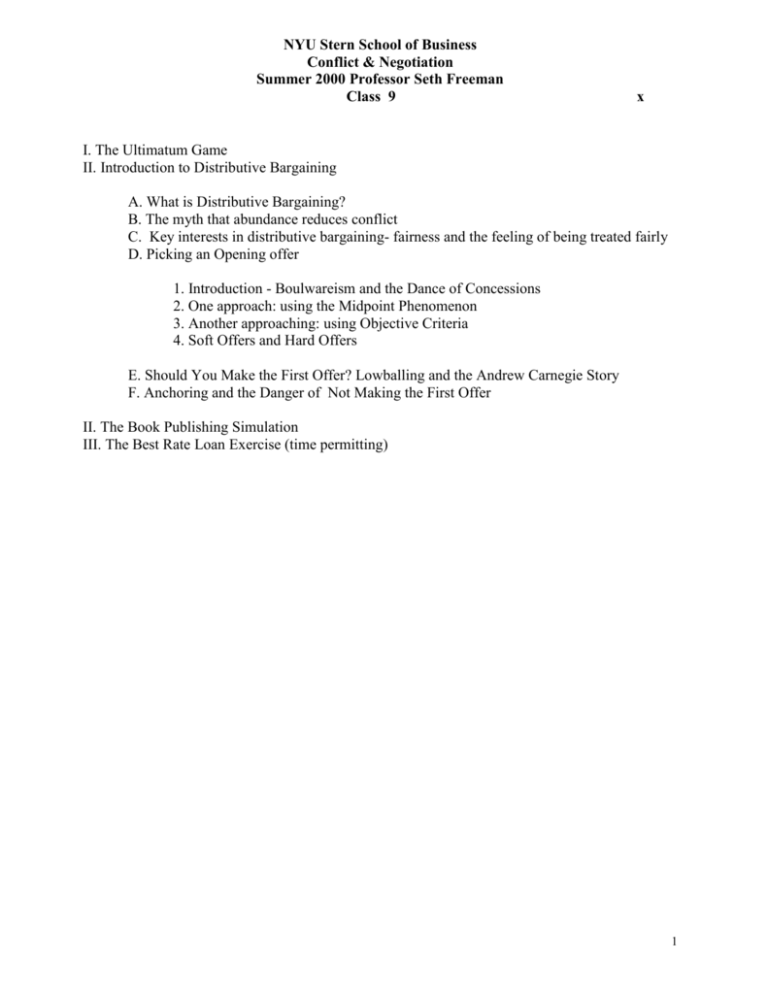
NYU Stern School of Business Conflict & Negotiation Summer 2000 Professor Seth Freeman Class 9 x I. The Ultimatum Game II. Introduction to Distributive Bargaining A. What is Distributive Bargaining? B. The myth that abundance reduces conflict C. Key interests in distributive bargaining- fairness and the feeling of being treated fairly D. Picking an Opening offer 1. Introduction - Boulwareism and the Dance of Concessions 2. One approach: using the Midpoint Phenomenon 3. Another approaching: using Objective Criteria 4. Soft Offers and Hard Offers E. Should You Make the First Offer? Lowballing and the Andrew Carnegie Story F. Anchoring and the Danger of Not Making the First Offer II. The Book Publishing Simulation III. The Best Rate Loan Exercise (time permitting) 1 The Ultimatum Game Confidential Information for Player A You are Player A. You are about to try to divide an imaginary $1,000 with another player. The instructor will assign a player to you. The money comes from the instructor. The instructor will give the $1,000 if and only if you and the other player (Player B) agree on how much you will each get. Therefore, right now, before you meet with Player B, please decided and note below the amount you will propose to keep and the amount you will propose to let Player B have. Both you and Player B know that $1,000 is at stake. When you meet, the only thing you may say to Player B is the amount you propose to keep and the amount you propose to give him. Player B may only say "OK" or "No Deal." There will be no further discussions, offers, or counteroffers. Write down the outcome below and, when the instructor tells you to, write down the results on the whiteboard. (E.g., "$XX/$YY" or "No Deal"). The entire game should take about a minute to run. Group # __________ Offer: Player A gets $______ and Player B gets $_______ Outcome: (check one:) Accepted _________ Rejected _________ 2 Distributive Bargaining Elements The Dance of Concessions $8000 $7,500 $7,300 $7,150 $6,000 $6,400 $6,600 $6,750 $7,000 OK People need to feel they have won a concession from the other person. Boulwarism (refusing to negotiate your offer) is very insulting because it denies people the chance to win concessions. Thus, build a cushion into your opening offer so you can make concessions. Opening Offers and the Midpoint Phenomenon "The point midway between two opening offers is not a bad predictor of where a final negotiating settlement will fall." (Manager as Negotiator, p. 136.) Why? Because the midway point is usually the most prominent Focal Point. A Focal Point is something that stands out psychologically. (Also, people often consider the midpoint to be a fair outcome.) $8,000 + $6,000 = $14,000 $14,000 = $7,000 2 Opening Offers and Objective Criteria $6,300?? are you crazy? How the heck did you comeup with THAT number? Here, let me show you the Blue Book... 3 soft and HARD offers "Asking $100,000" "$100,000 or best offer" "Price: $80,000 - $100,000" $100,000 negotiable" "$100,000 firm" Making the First Offer Without Information Caution: Negotiator Speaking from Ignorance Anchoring $120, $130, $140. "In stores, you might expect to pay even But thanks to this special offer, you can buy these beautiful bamboo steamers for the unbelievably low price or only $29.95." [Sticker price on car reads "$30,000."] "For you, I can make a special deal. $26,000 and it's yours today, no questions asked." "I was thinking of selling it to the dealer for cash. $4,000, but I'll sell it to you today for $3,000 Yes, we've had about 1 million visitors to the city in the last year alone. Maybe more. In fact, I think we may have had 1.2 million. Anyway, enough. You came here to see the apartment. Let me be frank. I think I could see clear to selling it to you for $450,000. 4 The Book Deal Simulation Book Agent's Role You represent Dillon Updike, an established American novelist in talks with a major English publishing executive who is interested in publishing your client's latest book. Your client has made it clear that he would like a royalty of 15% of profits and says that under no circumstances are you to accept a royalty of less than 10%. No offers have been made yet. While you have never negotiated with English publishers before and are unfamiliar with their business practices, you know that U.S. publishers often start at very low royalty rates of as little as 6%. You know that another publisher has expressed interest in the work, though no numbers have been mentioned yet. (If Updike's past sales figures are any indication, you can expect to sell 100,000 copies at $20. Please prepare for talks.) You will have 10 minutes to negotiate for a possible deal with the publisher. You will not need to submit a feedback memo about this negotiation. ____________________________________________ Statement of Agreement (or disagreement). Post results when instructed. Group ____ Deal Terms (if any): ___________________________ ______________________________ Name Name 5
